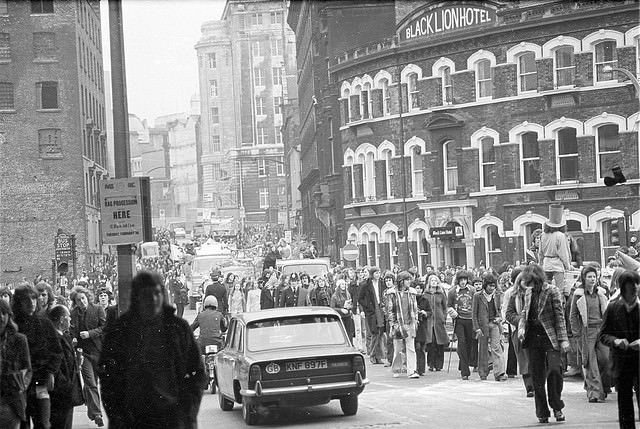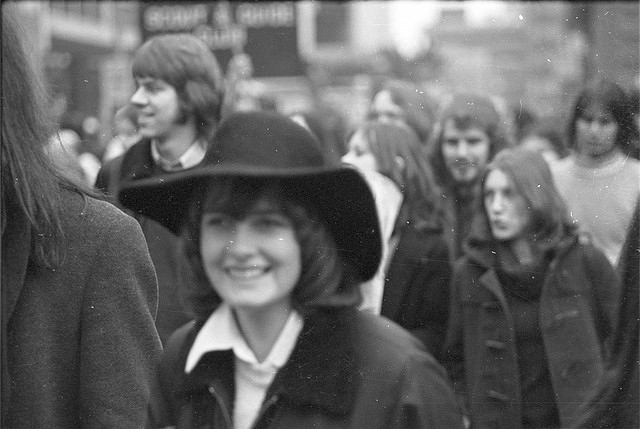In 1974, the streets of Manchester were filled with color, laughter, and creativity as students from Manchester and Salford staged their annual Rag Day Parade. Rag Day was a tradition where students would organize a parade and other events to raise money for charity. The parades were known for their humor, costumes, and a general sense of fun, and the 1974 edition was no different.
The Atmosphere of the Parade
The Rag Day Parade that year was a lively event, full of excitement. Students took to the streets dressed in various costumes, showcasing their creativity and sense of humor. Among them were Monty Python fans who dressed as Gumbys, characters from the famous British comedy show. The Gumbys, with their knotted handkerchiefs on their heads and stiff postures, were instantly recognizable to anyone familiar with the sketch. Their absurd and exaggerated behavior added a layer of humor to the parade that fit in perfectly with the general mood of the event.
A standout feature of the parade was a monkey-masked driver, who caught the attention of many onlookers. This masked figure drove through the streets, adding to the playful and surreal atmosphere. His presence, along with the other costumed participants, turned what could have been a simple charity event into a spectacle that entertained everyone who witnessed it.
Read more
A Mix of Fun and Authority
While the students were clearly having fun, there was also an interesting contrast in the form of a stern-looking policeman walking alongside them. His serious demeanor stood out against the joyful chaos of the parade. However, even this stern policeman couldn’t overshadow the fun being had by everyone else, including two of his fellow officers who were more in tune with the playful atmosphere. These officers, in contrast to their stern colleague, seemed to embrace the spirit of the event, making the parade feel like a well-balanced mix of order and fun.
The presence of the police during the parade was necessary to maintain safety and ensure that everything ran smoothly. But with some of them joining in and others keeping a straight face, it created a funny dynamic that became part of the charm of the parade. This balance between authority and lightheartedness is one of the things that made the 1974 Rag Day Parade stand out.
The Role of Charity
While the costumes, characters, and humor were a huge part of the parade, it’s important to remember that Rag Day had a serious purpose. The event was organized to raise money for charity, and students spent weeks preparing for it. They made floats, planned their outfits, and coordinated various activities to entertain the crowds. The money raised from the event went to local charities, which made Rag Day a significant part of the community calendar. The 1974 parade was no exception, combining entertainment with a focus on giving back.
The Parade’s Place in Manchester Culture
By 1974, the Rag Day Parade had become a well-established tradition in Manchester, one the community looked forward to each year. It was an opportunity for students to show off their creativity and humor, while also making a positive impact on the city. The event brought together people from different walks of life, all joining in to enjoy the spectacle and support the charitable cause.
The parade was more than just a student event—it was something that brought life to the city for a day. The streets were lined with spectators, both locals and visitors, who came out to see what the students had come up with that year. The mix of clever costumes, funny characters, and the occasional odd sight, like a monkey-masked driver, kept people entertained and engaged throughout the event.




















